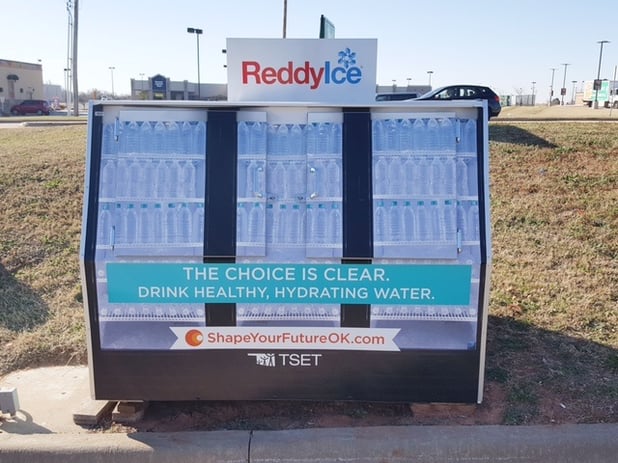
Thanks to Technology and Data, Out-of-Home Advertising Continues to Thrive
While TV and print budgets continue to decrease year after year, out-of-home budgets continue to grow with an estimated $29 billion for global out-of-home ad revenue in 2017. It’s projected to reach $33 billion by 2021, reported by the Outdoor Advertising Association of America and MAGNA Intelligence Study. So how is it that the oldest form of advertising is still growing year after year? The answer is technology and data.
As technology advances, we have more data and new ways to use that data in conjunction with our out-of-home (OOH) placements. Digital screens are just about everywhere — in grocery stores, elevators, gyms, bars, taxis, malls — and this list continues to grow. Digital screens allow advertisers to find hard-to-reach audiences where they are and deliver timely messages. Add in the use of beacon technology, object/facial recognition and adaptive creative, we have new ways to use OOH and improve audience interaction. Last year, Land Rover and Public Health England used a variety of technology to execute OOH campaigns utilizing social media, automated texts, facial recognition, adaptive creative and use of dynamic content derived from live, local data.
Check out the Land Rover #HIBERNOT recap:
The Public Health England, One You, recap:
So, you’re thinking, ‘Sure these are great and have massive budgets in large cities, but how does that help me?’ Trust me, I get it. I love the big splashy stuff like this Ghost Busters themed train station or even wrapped city buses.

The reality is that we don’t all get to do the spectacular stuff. However, that doesn’t mean we can’t use data to improve audience engagement in OOH campaigns. More than likely you already have the data and geo-targeting available in combination with digital and traditional static boards. Sure, it’s going to take some time and elbow grease to sift through the data. We have been geo-targeting for a few years to extend our messages. For example, we used social media ads to extend the reach and engagement of our mall, theater, elevator and even transit advertising. Plus, there are always new or non-traditional ways of executing OOH, like these wrapped iceboxes.

And the NYC Ferry system is launching interior and exterior, static and full-motion advertising for an immersive onboard experience. Wherever you might be, opportunities abound for OOH everywhere, and technology and data will continue to grow and create ways to improve engagement with OOH campaigns.
The key is learning how technology and data impacts your OOH campaign and how it can turn what was an awareness-only medium into a response-driven one. Mobile-driven data can tell us when, where and how your customers engage. Understanding the relationship between mobile and exposure to OOH can help shape and extend a message. The sky is the limit when it comes to planning your next OOH campaign. So, what does your data tell you? How can you engage your target with OOH? The time is now to understand the data available and execute OOH campaigns that reach people with relevant messaging where they are — whether that’s a bus stop or an elevator.








